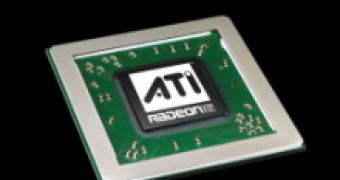I have to say that from the moment AMD bought Ati, an INTEL-like trend started inside the giant CPU/GPU manufacturer. And that's not good because one INTEL is not enough. AMD has always been the CPU company for the masses. And I don't like what they've done to the business lately. Everything from delays to tons of roadmaps goes as long as it keeps the public from seeing what's really going on. And when they finally deliver the goods, they don't work as expected.
The R600 case seems to follow the same logic but with one major twist. In December the 30th 2006, the website www.level505.com has published what seems to be the first R600 benchmark. Since many of you may have seen the results, I won't comment on them. However, I will point out two things.
First I have to say that the website layout looks rather poor, like it was made 2 days ago (ok, I cannot verify that but it's an assumption nevertheless). The R600 test is the only thing you will find in this location. Moreover, there are no actual photos of the products or screenshots with the results. Motive for which I can say that this is either a hoax or an article produced by AMD itself.
The idea is not new but it's somewhat surprising the fact that it could come from AMD only weeks before the actual product comes out. I guess it's kind of pointless since true Ati fans won't ever buy a G80 card although they know that it's a 3D monster. So what's the point?
That's for you to decide. And to help "lubricate" things a bit more, here's the specs, according to the website that has tested the R600: 64 4-Way SIMD Unified Shaders, 128 Shader Operations/Cycle 32 TMUs, 16 ROPs 512 bit Memory Controller, full 32 bit per chip connection GDDR3 at 900 MHz clock speed (January) GDDR4 at 1.1 GHz clock speed (March, revised edition) Total bandwidth 115 GB/s on GDDR3 Total bandwidth 140 GB/s on GDDR4 Consumer memory support 1024 MB DX10 full compatibility with draft DX10.1 vendor-specific cap removal (unified programming) 32FP internal processing Hardware support for GPU clustering (any 2^n number, not limited to Dual or Quad-GPU) Hardware DVI-HDCP support (High-Bandwidth Digital Content Protection) Hardware Quad-DVI output support (Limited to workstation editions) 230W consumption Multi-GPU cluster solutions will be available for the workstation market only until March, 2007. Processing Power: 105,000,000,000 SOps (Shader Operations Per Second) 2,000,000,000 TCps (Triangle Calculations Per Second) 28 GTps (Gigatexels Per Second)

 14 DAY TRIAL //
14 DAY TRIAL //